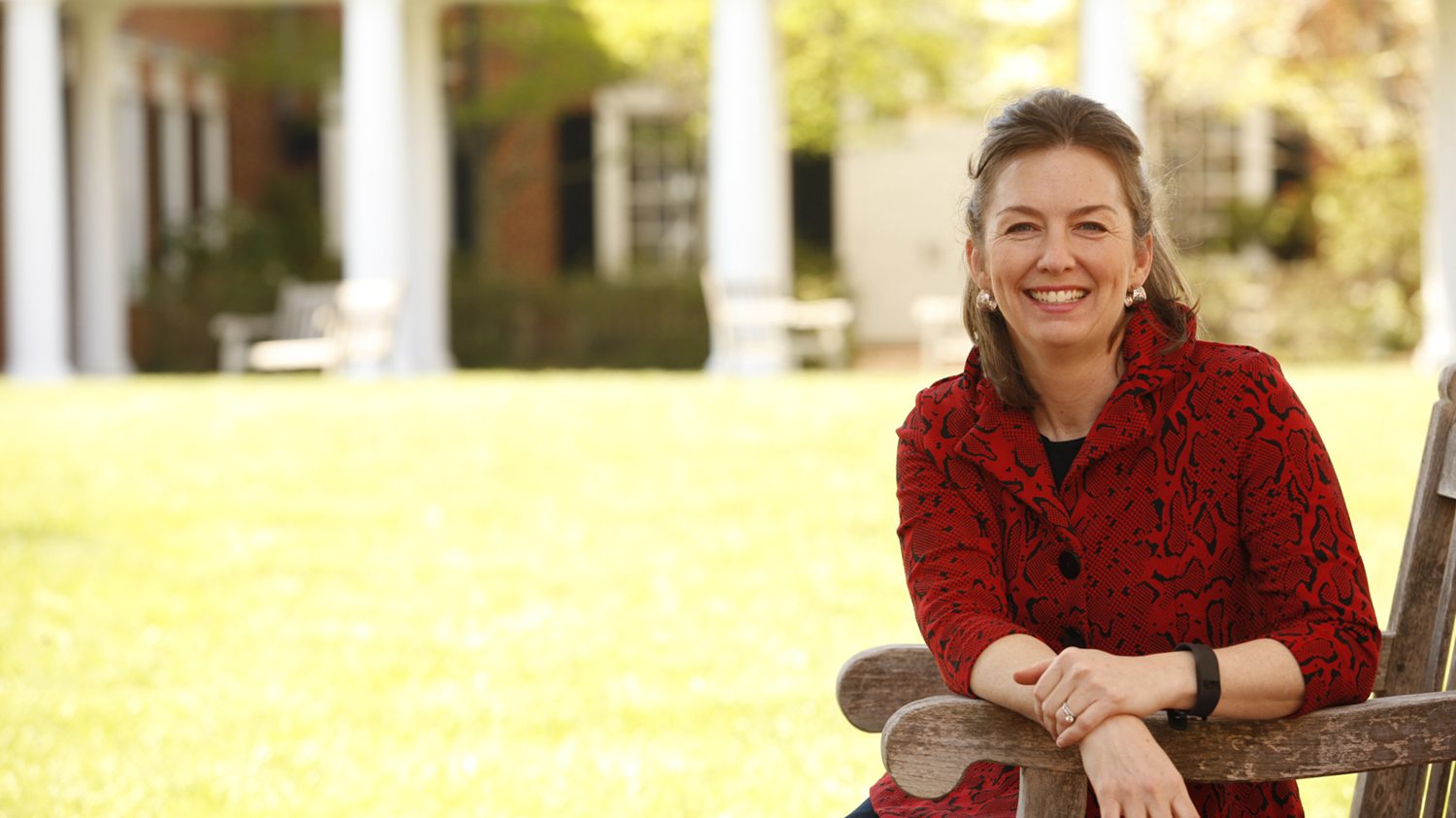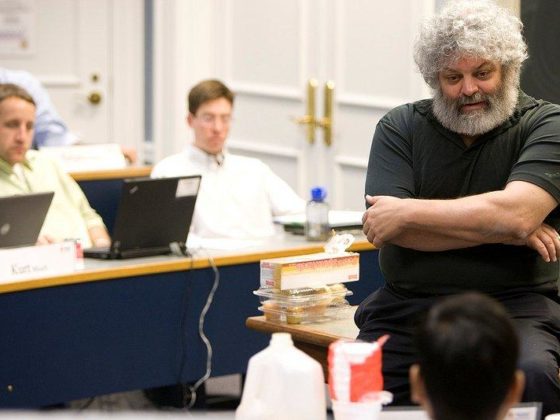By Maeve McGilloway and Alexandra Williams
What role can the free market play in women’s participation in society?
How have laws changed to encourage women’s participation in the labor market?
Are differences in outcomes the result of structural policy, or the individual choices of men and women?
These were some of the questions posed last week at the Darden School when the Adam Smith Society, a student group focused on promoting on-grounds debate and discussions on capitalism, partnered with the Graduate Women in Business club to sponsor a panel entitled “Feminism and the Free Markets.”
This panel was loosely-based on UVA School of Law Professor Julia Mahoney’s seminar of the same title and, in addition to Mahoney, featured distinguished speakers from the Frank Batten School of Leadership and Public Policy (Sophie Trawalter), Senior Fellow at the Manhattan Institute (Kay Hymowitz) and moderator Mary Margaret Frank, professor from the Darden School of Business and an academic director of the Institute for Business in Society.
The objective of the panel was to explore the interactions between economic forces and the choices people make in a free market economy – and to delineate how those influence women’s participation in society and labor markets.
One topic that resonated with the group, as many of the student audience members are about to re-enter the working world, was the concept of family-friendly policies and how these policies can encourage higher labor participation among women. Professor Mahoney mentioned the paradigm of Sweden, with policies that encourage 16 months of paid leave, extra tax-credits to help cover parenting costs, and a transferable two-month leave for either parent, all of which support almost 80% of Swedish women returning to work after childbirth.
While realizing that this issue is complex and doesn’t necessarily lead to ideal outcomes for women, the group learned how some of these family-friendly policies, such as shared parental leave and greater access to childcare facilities, may promote gender-neutral parenting. Sharing responsibilities across partners, not surprisingly, led to better outcomes for women re-entering the labor force.
Turning to a discussion of the gender pay gap, Hymowitz pointed out that there are many social factors the statistics can easily overlook when measuring this gap, emphasizing that research and social context are important.
When discussing statistical differences or gaps in social experiments, Frank asked the audience to consider, “How big is the difference? Statistically significant, but what is the actual magnitude?” She stressed it is important to note not merely the existence of a statistical difference or gap, but the degree, the significance and the explicit importance of that difference.
Next, Frank asked the panel to address non-malicious drivers of gender inequality and how implicit sexism can promote gender disparities in the workplace. To this, Trawalter offered that there are two major assumptions about female participation in the workforce: the first is that women opt out and the second is that women do not seek leadership as much as men.
However, Trawalter asserted, these common assumptions contain inherent biases. For example, she referenced some of her research around gender differences in perceptions of safety – essentially, many women may have concerns about safety working at night and, by choosing to work fewer hours than their male counterparts, this may undermine their productivity or decrease their sense of belonging in the community.
Of course, there are the explicit and structural elements that promote disparity, but Trawalter illuminated the fact that individuals and organizations must try to recognize the subtle and more hidden disparities as well. Much of Trawalter’s research aims to develop constructive strategies to cope with the challenges of diversity on an everyday basis.
Additionally, Kay Hymowitz mentioned the recent emergence of a “creative economy,” a term that largely identifies the move from economies based on the production of goods to economies based on provision of services, creative imagination and knowledge. John Howkins first dubbed this term in 2001 when he described it as, “the transactions of creative products that have an economic good or service that results from creativity and has economic value.” Audience members learned that female entrepreneurs are not only vital in these more inventive and flexible labor markets, but tend to thrive in them, as these markets favor knowledge and creativity-based skill sets over mechanical or manual labor intensive abilities.
This creative economy is valued at $3.7 trillion globally and cities that invest in this sector, like Austin or Brooklyn, have some of the fastest job growth. Hymowitz highlighted her hometown of Brooklyn, New York as having “consummated a marriage between art and commerce,” whereby knowledgeable creative types, particularly women, can thrive on their own terms.

Hymowitz also referenced the success of artist-turned-entrepreneur Lexy Funk, co-founder and CEO of Brooklyn Industries bags, who flourished in this new economy and is now a nationally-recognized brand. The creative economy offers a platform to support the continued empowerment of women.
Referencing the type of environments that either help women to succeed or fall behind in the labor force, Frank asked the group to address the roles of psychology and culture versus business responsibility and policy change. Noting her work with the United Nations, Trawalter described the concept of the “double bind” – a social dilemma in which, if a woman behaves in a “feminine” way, she may be liked, but not respected or viewed as a leader; however, if she operates in a “masculine” manner, she may be judged and disliked.
“It can often be difficult for women to walk along these narrow lines,” added Frank.
Similarly, the panel discussed the “glass cliff,” a phenomenon in which women in leadership roles, such as corporate executives and female political candidates, are more likely than men to achieve leadership positions during periods of crisis or downturn, when the chance of failure is highest.
Toward the end of the discussion, Frank asked the panel and audience to consider men’s roles and whether their impact matters. Unanimously, all of the panelists agreed that “there has got to be buy-in from men,” since male inclusiveness is an important but not always prioritized aspect of closing the gender gap.
According to Hymowitz, “As a society, we have a lot of missing men” since the economic shift from industrial to knowledge-based markets.
This new economic climate has negatively impacted blue collar male American workers, while simultaneously raising up female entrepreneurs and educated business women. Blue collar male displacement, coupled with the advancement of “women issues,” easily pushes away male advocates, whom women in the workforce need to help achieve gender equality in the next generation.
The panelists came from diverse backgrounds and touched on a myriad of topics, leaving many in the room wanting the conversation to last more than the scheduled hour. Audience members were inspired by the panelists to continue the ongoing conversation about supporting women’s participation in the labor markets and society-at-large.
Philosopher Amelie Rorty once wrote, “We must engage in continuous conversation, testing one another, changing the minds of others because we have listened to the voices of our fellows.” The students in attendance were encouraged that opportunities to bring together different voices of the University will continue to engage in this dialogue and push new ideas all around the University and beyond.
Maeve McGilloway is a Second Year Graduate MBA student at the Darden School of Business and the President of the Graduate Women in Business Club. Alexandra Williams is a Fourth Year undergraduate student majoring in Politics and Foreign Affairs at the University of Virginia’s College of Arts and Sciences.





